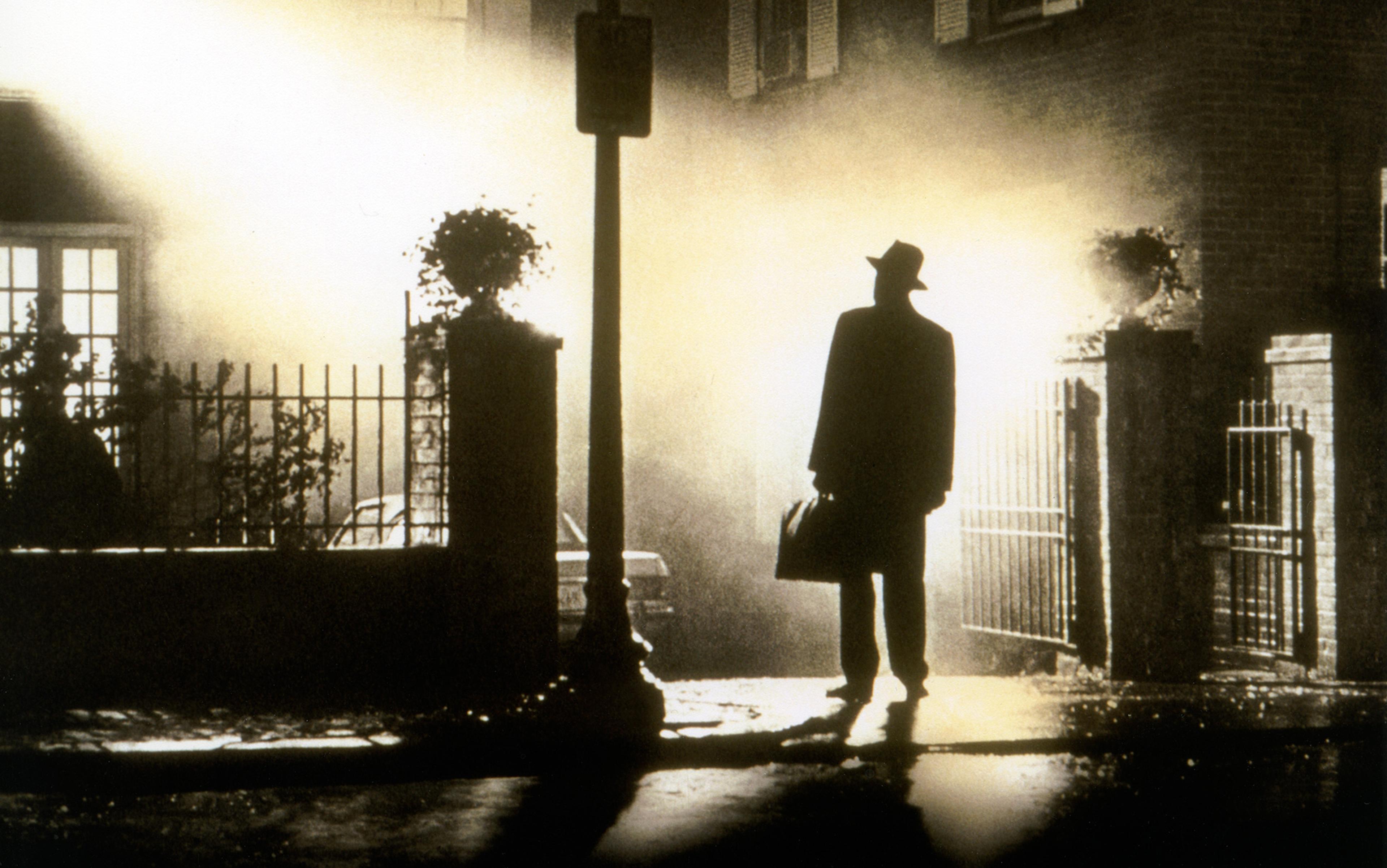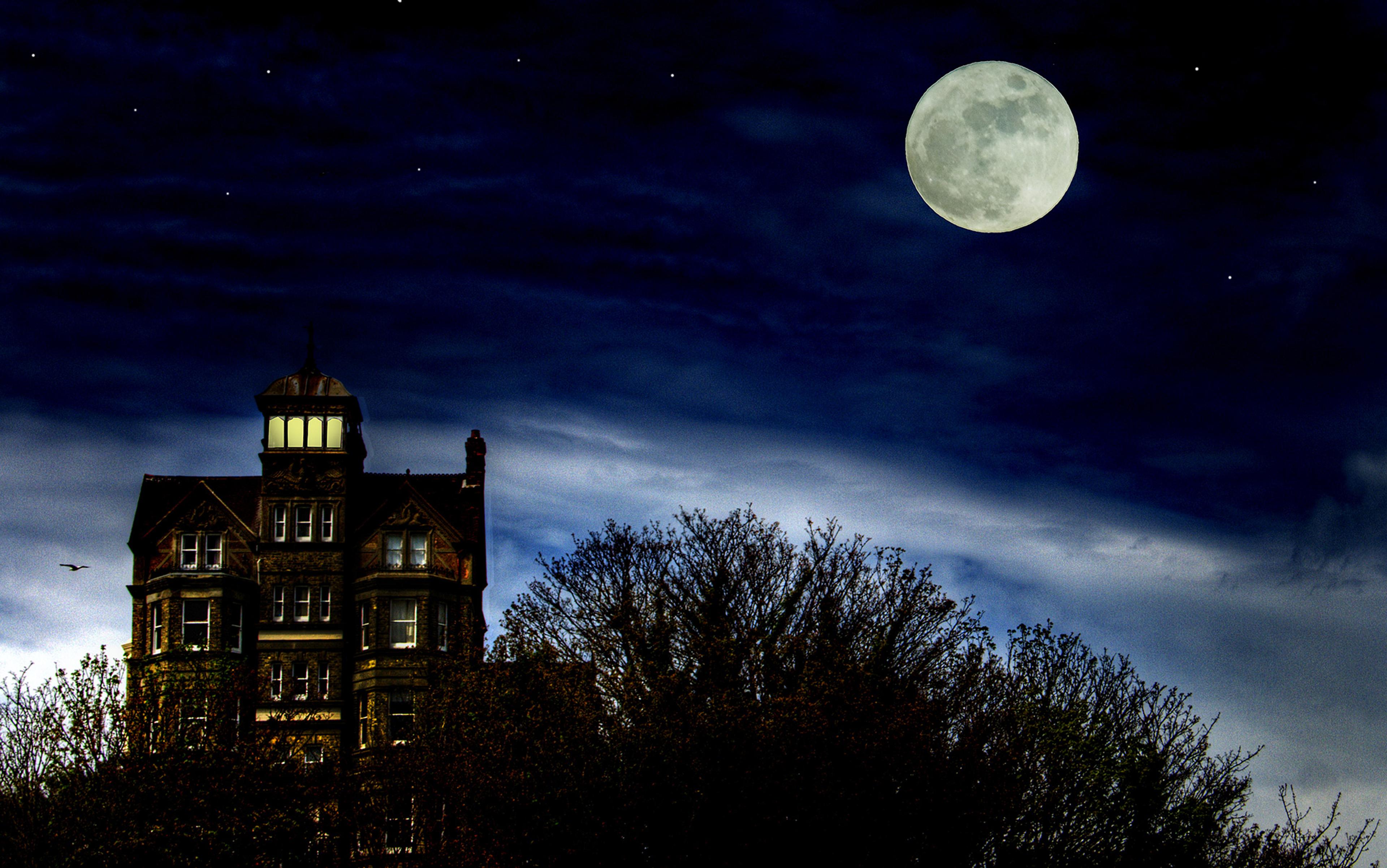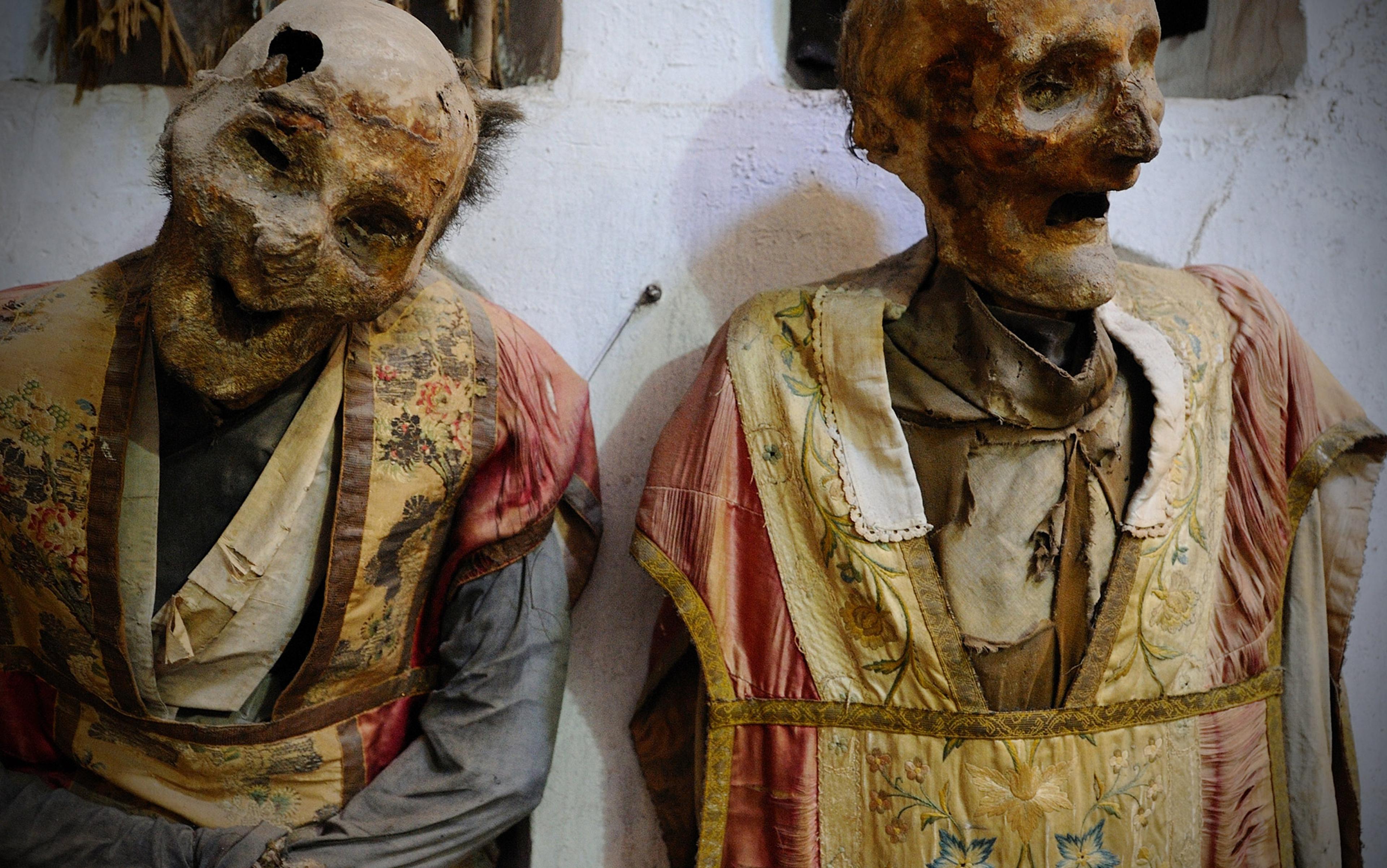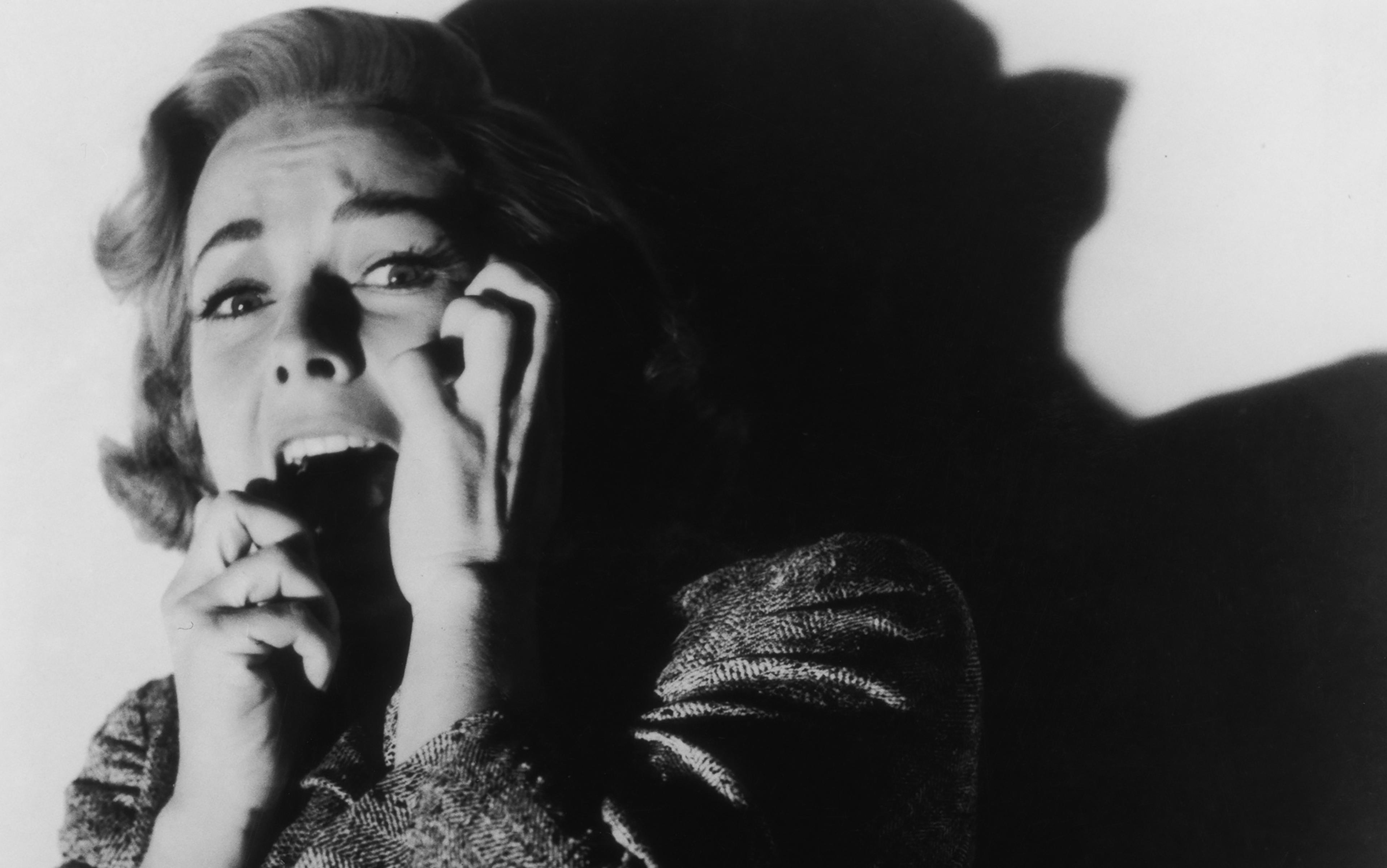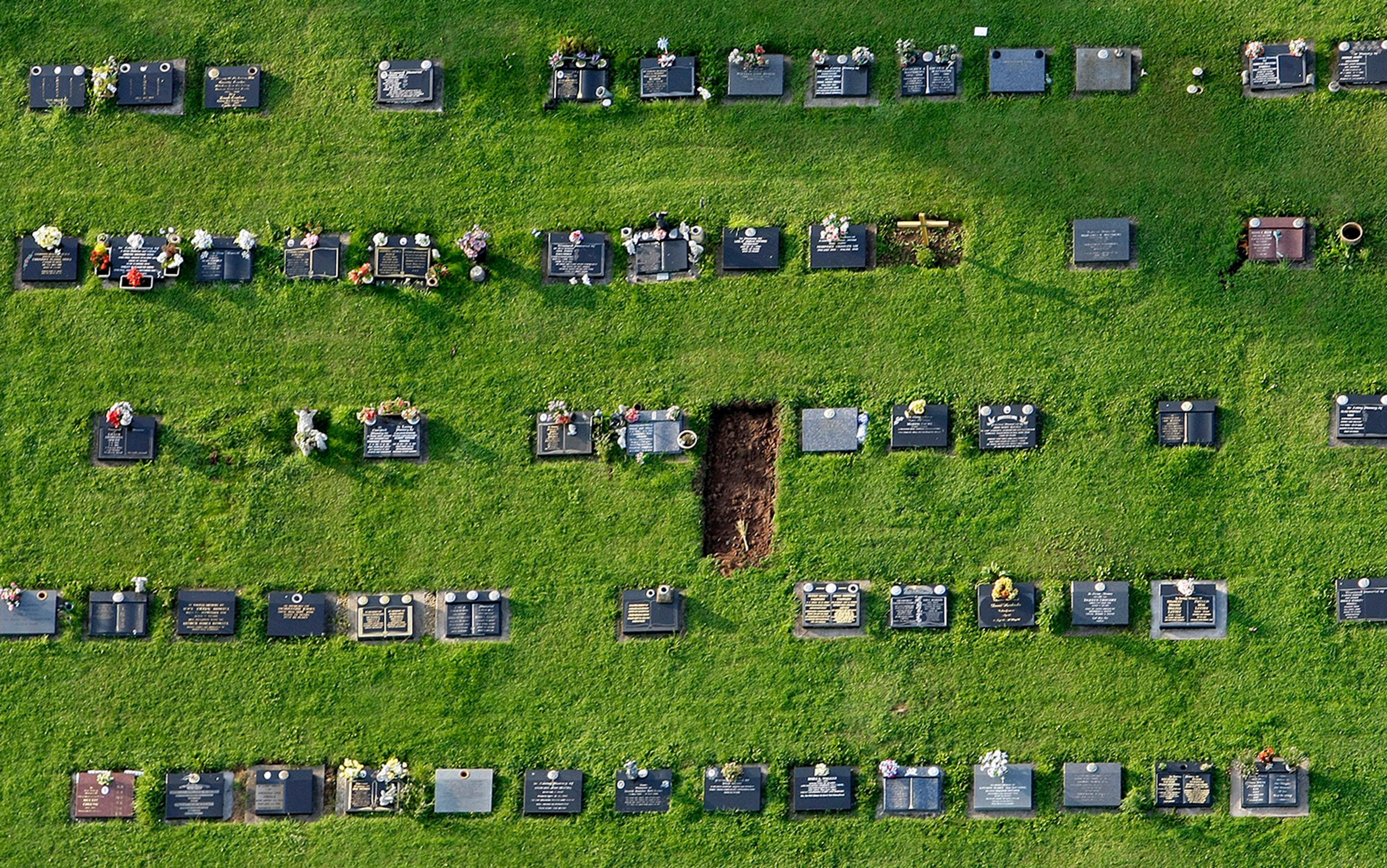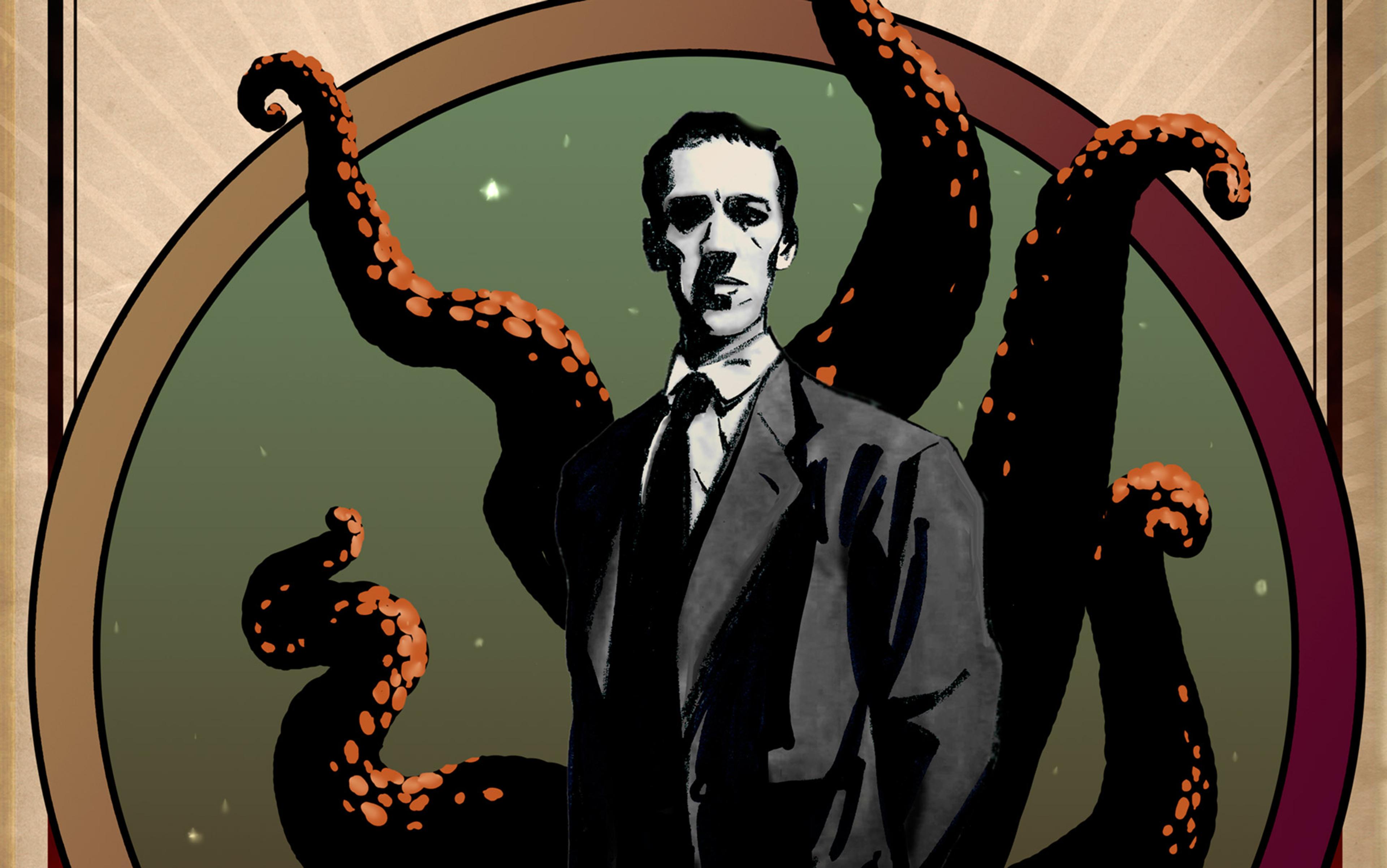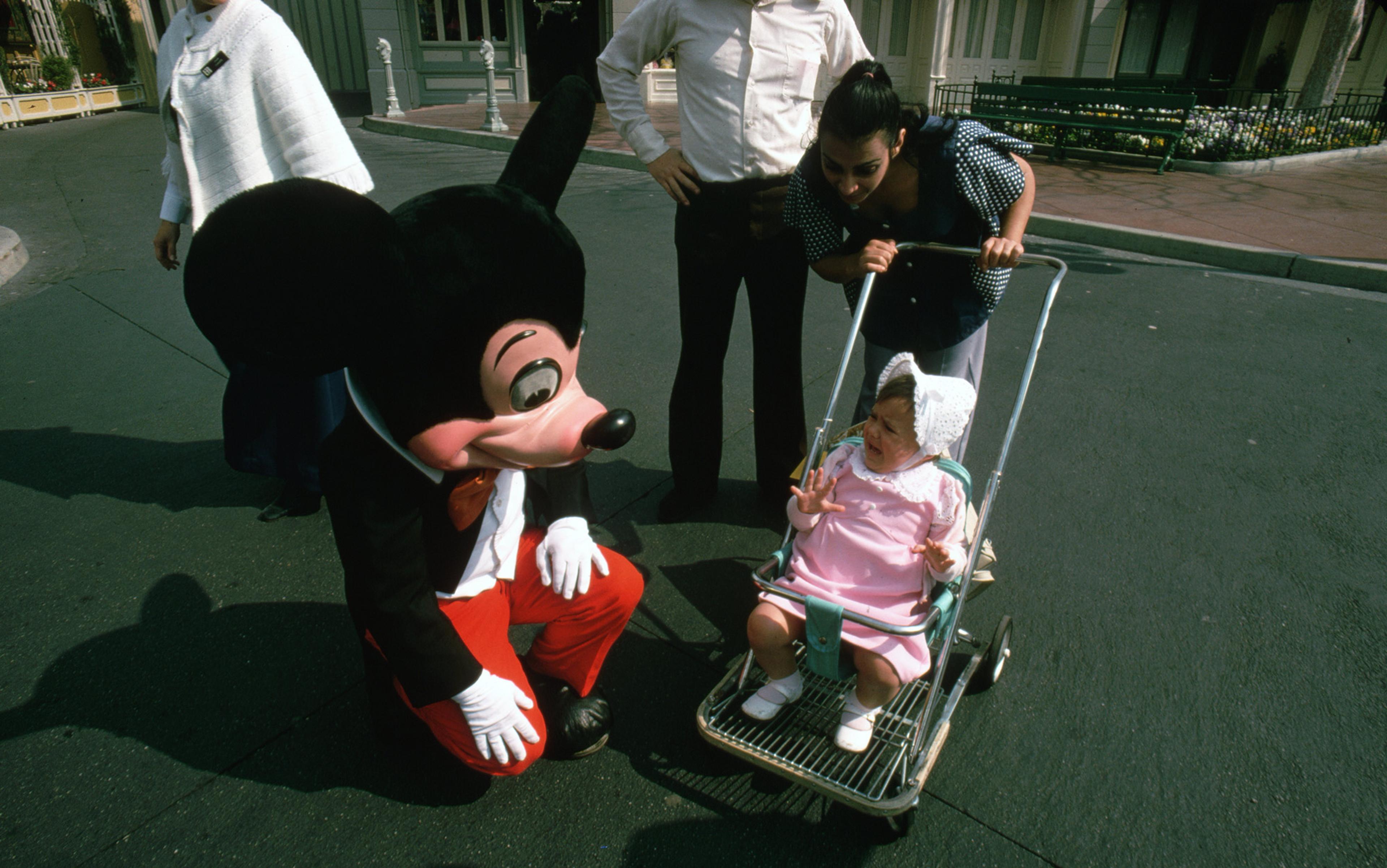I’m a full-time horror researcher with my own lab. I read Stephen King novels at bedtime, watch slasher movies on the weekends, and play survival horror video games whenever I have a spare moment.
But it wasn’t always like that. The first time I saw a horror film at the movie theatre, I left halfway through. It was too much for 14-year-old me. There I was, in the darkness of the cinema, staring at monsters cavorting on the screen and listening to the other teenagers screaming in delight around me. Anxious excitement had turned to heart-stopping horror as those on-screen monsters unfolded their full potential for death and grisly dismemberment.
It was a loss of face from which I have never fully recovered. The burning shame of leaving early is about as vivid in my memory as the metallic terror of witnessing the gory acts of those homicidal monsters.
One particular scene is etched in my mind. Just as the main character – a sympathetic and attractive young woman – is about to kiss her charming date, his handsome face contorts and transforms into the visage of a cat-like monstrosity, with a mouth full of sharp fangs. She manages to fight him off and runs into the arms of a policeman, who helps the sobbing woman into his patrol car. Phew! But then, the cat-man-monster shows up behind the cop with a pencil in his hand. He slams it, pointy end first, into the unfortunate lawman’s ear with a squishy-crunchy sound. The cop then falls over, landing on the side of his head from which the pencil protrudes… with another squishy-crunchy sound to follow.
For all its visceral and violent unpleasantness, the experience of watching this movie – some of it, anyway – ignited a curiosity in me. Why did all the other teenagers around me seem to enjoy this grotesque flick – Sleepwalkers (1992), if you’d been wondering. Indeed, why do so many people voluntarily seek out entertainment that is designed to shock and scare them? What do they get out of it? A thrill, a jolt to the nervous system – or is there something deeper going on?
Horror movies come in various forms, which can be divided into two main subgenres: supernatural ones (think of wailing ghosts, rotting zombies or mind-shattering abominations from forbidden dimensions), and the more psychological (your masked-serial-killers and giant-reptiles varieties). Common to them all is that they aim to evoke negative emotions, such as fear, anxiety, disgust and dread. They also tend to be enormously popular. According to a survey my colleagues and I conducted a few years ago, more than half of US respondents – about 55 per cent – say they enjoy ‘scary media’, including movies such as The Exorcist (1973), books such as King’s Salem’s Lot (1975) and video games such as Amnesia: The Dark Descent (2010).
What’s more, people who say they enjoy scary media really mean it. We also asked our respondents how frightening they wanted their horror to be. It might sound like a weird thing to ask – like asking how funny they want their comedies to be – but we wanted to test an old Freudian idea that the negative emotions elicited by the genre are unfortunate byproducts; a price that audiences are willing to pay in order to watch movies that allow them to confront their own repressed desires in monstrous disguise. But that’s not what we found. About 80 per cent of our respondents said they wanted their horror entertainment to be in the moderate-to-highly frightening range. By contrast, a measly 3.9 per cent said that they prefer horror that’s not scary at all.
So, fear and the other negative emotions are central to the appeal of horror, a fact not lost on the creators of horror entertainment. Surely you’ve seen movie trailers claiming to be ‘The scariest movie of all time!’ or promising to make you sleep with the lights on for weeks afterwards. More inventively, the US filmmaker William Castle once took out life insurance on his audience. If any audience member died from fear as they watched his movie Macabre (1958), their bereaved ones would receive $1,000 from Lloyd’s of London. (Nobody did die. But the gimmick surely drew more horror hounds to the picture.)
Unsurprisingly, given their appeal, horror movies are big business. In 2019, 40 new horror movies were released in North America, grossing more than $800 million in the domestic theatrical market alone. Likewise, the US haunted attractions industry is growing steadily, in 2019 generating up to $500 million in ticket sales. The following year, 2020, naturally saw lower numbers, but even in that year of COVID-19 lockdowns and empty movie theatres, horror movies broke all previous records in terms of market share. That development continued into 2021, with the horror genre now accounting for almost 20 per cent of the market share at the US box office. Evidently, people want scary entertainment, even when you’d think the real world was scary enough.
Despite the broad appeal of the horror genre, it is haunted by bias and prejudice. Many people, apparently, think that horror movies are dumb, dangerous or both – artistically unsophisticated, morally corrosive, and psychologically harmful, with a dubious appeal primarily for maladjusted teenage boys. But what does the science say?
Firstly, horror is not a particularly male genre. While boys and men are slightly more likely than girls and women to say that they enjoy horror, the difference is much smaller than many people seem to think. In our aforementioned survey, when we asked to what extent respondents agree with the statement ‘I tend to enjoy horror media’, on a scale from 1 to 5, men averaged at 3.50, whereas women averaged at 3.29.
Secondly, horror movies are not only watched by teenagers. Yes, the movies are often marketed to that audience, and the appetite for horror does seem to peak in late adolescence, but it doesn’t emerge out of the blue the day that kids turn 13, and it doesn’t disappear in older people either. An ongoing research project of ours is finding that the desire to derive pleasure from fear is evident even in toddlers, who universally enjoy mildly scary activities, such as chase play and hide-and-seek. Even old folks seem to enjoy the occasional thrill provided by mildly frightening media such as crime shows. The British crime drama Midsomer Murders (1997-) always seemed to me like light horror for seniors, with its eerie theremin theme tune and the inexplicably abundant, often startlingly grisly murders in the otherwise peaceful fictional Midsomer County.
The ‘monkey see, monkey do’ model of media psychology now seems to have been abandoned by most experts
Thirdly, there is no evidence that horror fans are particularly maladjusted, depraved or unempathetic. When my colleagues and I looked into the personality profile of horror fans, we found that they are about as conscientious, agreeable and emotionally stable as the average person, while also scoring higher than average on openness to experience (meaning that they enjoy intellectual stimulation and adventure). It’s true they do tend to score fairly highly on sensation seeking, which suggests that they tend to be easily bored and on the lookout for excitement. Maladjusted or depraved, though? Nope, no evidence.
If horror movies do not attract the maladjusted and the depraved, do they then create psychotic monsters? One might think so, judging from the moral panics that have surrounded the horror genre throughout its recent history, from Victorian-era concern over ‘penny dreadfuls’ – sensationalist, often spooky or grisly stories sold in cheap (one-penny) instalments – to modern-day media meltdowns over slasher movies.
Most recently, pundits have worried about the effects of so-called ‘torture porn’ movies; films such as Eli Roth’s Hostel franchise (2005-11), about a shadowy organisation that charges people for the opportunity to torture and murder innocents. In the first Hostel movie, we follow a trio of backpackers who are captured by the organisation and sold for torture. The limbs of one backpacker are subjected to a chainsaw; the torso of another to a power drill. Only one of the backpackers makes it out alive (if not completely whole). The film depicts these insidious assaults in all their bloody nastiness, prompting media commentators to rally against the film and its ilk, arguing that their focus on torture and gore stoke unhealthy, sadistic drives in the audience.
There is no substantial evidence to support that concern – audiences know that what they are watching is fiction. The psychological effects of violent media are still discussed by scholars and scientists, but the ‘monkey see, monkey do’ model of media psychology has been severely criticised on methodological and empirical grounds, and now seems to have been abandoned by most experts. In fact, one recent study covering the period 1960-2012 in the US found that, as movie violence went up, real-world violence actually went down.
This is not to say that horror movies cannot have negative effects. Indeed, media psychologists have documented that most people have some kind of ‘traumatic’ experience with horror movies. I use the quotation marks because we are not really talking about clinical trauma here. For the vast majority of people, such experiences consist of mild behavioural disturbances – nightmares, or sleeping with the lights on, or increased vigilance for a few days. For instance, one study found that around 90 per cent of US college students had had such experiences, including some who had refused to go camping after watching The Blair Witch Project (1999), a movie about three young people getting lost and dying horribly in the woods.
These mild and temporary hangover effects are just one side of the coin. Long ignored by the scientific world, it’s now clear that horror consumption has many positive effects. Moreover, a taste for horror is natural and should not be seen as pathological. Kids who are attracted to monster comics such as Tales from the Crypt (1950-55) and The Walking Dead (2003-19) are perfectly normal, as are teenagers who love slasher movies or adults who enjoy haunted attractions. That taste makes good sense from an evolutionary perspective. People evolved to be curious about danger, and they use stories to learn about the world and themselves. Horror stories specifically allow them to imaginatively simulate worst-case scenarios and teach them about the dark sides of the world, and about the dark spectrum of their own emotional lives.
This morbid curiosity has helped our ancestors stay alive in a dangerous world by learning about it
The behavioural scientist Coltan Scrivner at the University of Chicago calls this appetite ‘morbid curiosity’. Some people have lots of it, and some very little, but most of us are fairly morbidly curious – we have a hard time looking away from an accident, and we occasionally feel the pull of a true crime show, a horror movie or a documentary about the paranormal.
This fascination with the gruesome is adaptive, says Scrivner; it is a learning mechanism that allows us to collect information about the Grim Reaper and his modes of operation, and it underpins the widespread interest in horror. Stephen King tells the story of how, when he was 10 years old, his mother discovered a scrapbook he had been keeping on the spree killer Charles Starkweather, who was at that time at large. ‘Why?’ asked his mother, concerned. King’s answer: ‘I need to look out for this guy. I need to know everything about him, so that if I ever meet him or anybody like him, I can go around.’
So, when we are drawn to horror movies, we are basically giving in to a deep-seated instinct, a morbid curiosity that has helped our ancestors stay alive in a dangerous world by learning about it at a distance, or even vicariously. Horror satisfies this instinct and allows us to engage playfully with made-up worlds that brim with danger, but at no real risk.
To test this hypothesis, my lab conducted an empirical study, led by my colleague Marc Malmdorf Andersen, at a Danish commercial visitor attraction, Dystopia Haunted House, that’s located in an abandoned factory out in the woods. Every October, the factory comes alive with the groans of zombies and the roar of chainsaws, punctuated every few minutes by screams of joyful terror. We recruited more than 100 paying guests, fitted them with lightweight heartrate monitors and asked them to fill out several questionnaires. We also recorded their behaviour with surveillance cameras at key points inside the haunt, such as the moment when an actor in a lab coat distracted the guests with a crazy-scientist rant, setting up another actor in zombie make-up to jump out from under a table, scaring the guests witless and providing us with wonderful data on behavioural and physiological responses to acute threat events.
Supporting the evolutionary function of horror, we found that there is a sweet spot between fear and enjoyment. People who seek out horror want just the right amount of it. Too scary, and it is unpleasantly overwhelming; not scary enough, and it is boring. But just the right amount of fear, and you are in the zone of recreational horror – a zone in which you are enjoying yourself and might just be learning important things in the process, such as how to regulate your negative emotions.
Emotional regulation is key to recreational horror because we all differ in the intensity of fear that we find tolerable or even pleasurable. As horror researchers have known for a while, not every horror fan is an adrenaline junkie. We explored these emotional dynamics in another study we conducted at Dystopia Haunted House. This time, we recruited several hundred guests and gave them a choice of challenges: either try to become as scared as possible, or try to keep your fear at an absolute minimum as you go through the haunted attraction. As it happened, half the guests chose the maximum-fear challenge and the other half chose the minimum-fear challenge.
People actively use a range of psychological, behavioural and social strategies to achieve their optimum fear level
Our participants reported remarkably different fear levels. Those guests who had chosen to minimise their fear reported, on average, a fear level of 4.3 on a scale from 0 to 9. Those who chose to maximise their fear, on the other hand, reported an average fear level of 7.6. Strikingly, though, both groups reported similar (and very high) levels of satisfaction.
In other words: there are several ways in which people can derive pleasure from recreational horror, whether in a haunted attraction or in front of the screen. For some, it is about maximum stimulation; those people are the adrenaline junkies. But for others, it is about keeping fear at a tolerable level – a challenge in self-control; they have been called ‘white-knucklers’. Common to both groups is that they actively use a range of psychological, behavioural and social strategies to achieve the optimum fear level.
In another recent study, we shed more light on the possible benefits and appeal of horror entertainment and made a surprising discovery in the process: there are three categories of horror fan. Alongside the adrenaline junkies and white-knucklers are what we called the ‘dark copers’. We discovered that the adrenaline junkies experience a mood boost when they seek out horror; the intense stimulation puts them in a better mood. The white-knucklers do not experience that mood boost in response to horror, but they do feel that they learn something about themselves and that they develop as a person. They might discover how much fear they can take, what dread feels like, how they respond to intense stress, and how to regulate their own anxiety – all vital survival skills.
The third kind, the dark copers, had not been previously identified in the scientific literature, and they are intriguing. They reap all the benefits: a mood boost, as well as feeling that they learn something about themselves and how to confront the real scary world, perhaps by simulating frightening encounters – for them, it’s a kind of practice. Maybe the dark copers are the ones that the horror movie industry should be targeting, and not just the adrenaline junkies, who seem to be the intended audience of those ‘Scariest movie ever!’ taglines.
Sceptics might remain unconvinced by the idea that people could learn anything of value from movies about demonic possession, deranged chainsaw killers and homicidal puppets. It might seem outrageous. Well, in the early months of the pandemic, we decided to investigate whether horror fans had any edge over non-fans in terms of psychological resilience. Our thinking was that, if people do indeed practise emotional regulation skills when they watch horror movies, they might be able to use those skills in real-world situations.
That is indeed what we found. People who watched many horror movies reported less psychological distress in response to COVID-19 lockdowns than those who avoid horror movies. Moreover, fans of ‘prepper movies’ – zombie-apocalypse movies, alien-invasion movies, that sort of thing – felt more prepared for the consequences of the pandemic. They had seen similar things in the movies. They had imaginatively rehearsed for such scenarios, and were less overwhelmed by the repercussions of the crisis. A fictional scenario about the undead overturning the social order – with healthcare systems collapsing, law and order deteriorating, and infrastructure toppling – might not be that different from a real-world situation of great social and institutional turmoil.
Horror movies, then, can function as inoculation against the stresses and terrors of the world. They help us improve our coping skills, and they might function as a kind of enjoyable exposure therapy. There is also some preliminary evidence to suggest that people who suffer from anxiety disorders can find comfort in horror movies, presumably because these movies allow them to experience negative emotions in controlled and controllable doses, practise regulation strategies, and ultimately build resilience.
People go in with strangers; 50 minutes later, they stumble out, chatting and laughing like old friends
In addition to those psychological benefits, there might be social benefits of watching horror movies. Consider how scientists of religion have puzzled over the prevalence of painful religious rituals. Why do people fire-walk and pierce themselves with sharp objects in religious contexts? Apparently, one major function is that such psychologically and/or physically painful behaviours strengthen group identity and make group members more altruistic toward each other. You go through a painful experience together, which reinforces group bonds. It’s a similar story for horror entertainment.
Even some non-fans let themselves be talked into watching a horror movie with friends, presumably because watching horror films together can be a lot of fun, whether you enjoy the movies themselves or not. Recall that about 55 per cent of Americans in our survey said that they enjoy horror. Well, almost 90 per cent of the individuals sampled in our more recent study had sought out horror at least once in the prior year. Evidently, it is not just horror fans who watch horror movies.
When you face a frightening situation together, and make it through that situation together, you feel that you have mastered it, not unlike the dysphoric religious rituals observed around the world. My colleagues and I see this all the time in our haunted house research. People go through the attraction with strangers. They seem nervous and fidgety before they enter; 50 minutes later, they come stumbling out of the haunted house, sweating, chatting and laughing like old friends.
For many viewers, perhaps most, horror movies provide meaningful entertainment that can have positive psychological and social effects. The genre is still steeped in stigma, maybe because it seems to appeal to ‘primitive’ emotions such as fear, anxiety and disgust. Horror movies rarely receive prestigious accolades, such as Academy Awards, and horror writers, such as Stephen King, have struggled to gain critical recognition. This prejudice is silly. The literary canon brims with frightening material – check your Shakespeare, or your Melville – and besides, horror movies do not appeal just to emotions. Many of them also appeal to the intellect, and prompt reflection and maybe even introspection.
If you don’t believe me, find a horror movie to watch tonight, and see for yourself. The trick will be to chose a movie that hits your sweet spot. You don’t want something that overwhelms you with horror, as happened to me in 1992, but you also don’t want something too tame. Once you have found something that seems to fit the bill, invite a couple of friends over so you also reap the social benefits of collective horror-movie watching. And rest assured that, while you might suffer a few mild side-effects, such as a nightmare or a compulsion to sweep the bedroom for monsters before bedtime, there is a real chance that you will feel closer to your friends, learn something about yourself, and perhaps even emerge more resilient than before.
To read more about emotional regulation, visit Psyche, a digital magazine from Aeon that illuminates the human condition through psychology, philosophy and the arts.
